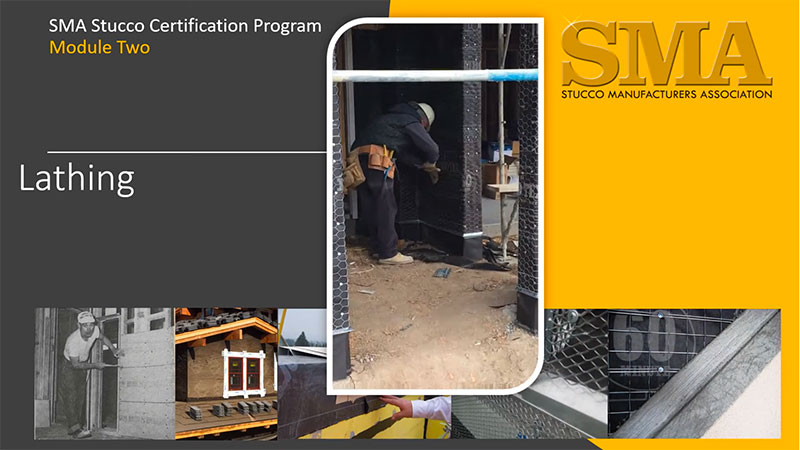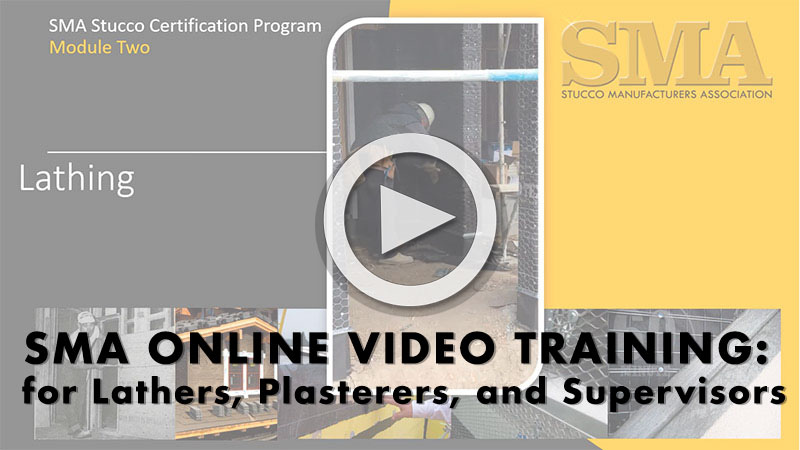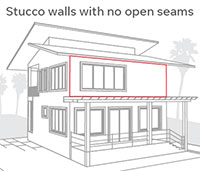LATHERS: A lather is a trade worker who installs the re-enforcing base (lath) for a plaster coating(s), this often includes structural elements such as framing, furring, main runners, bracing and hanger wires. The lather also installs the trim accessories that establish terminations and the thickness of plaster. This can include weep screeds, casing beads, drip screeds, reveals, corner beads (aids) and control or expansion joints.
The lather must be well versed on flashing issues as they often install the water-resistant barrier that is integrated with penetrations flashings. A lather can also install solid lath panel base products for plaster, such as gypsum lath used for skim coat or veneer plaster assemblies. The skilled and knowledgeable lather should be able to read blueprints, be good at math and have an understanding of building (structural) loads, deflection criteria and water penetration issues. Lathers require a wide knowledge base of framing and flashing, which explains why many lathers end up becoming estimators or project managers for general contractors.
The SMA video training course on Lath contains two modules (plus an optional test for those wanting a certificate).
The modules cover lath materials, codes and standards relevant to lathing, tools, safety, per-installation inspection, and tips on lathing. The videos explain why lathing and flashing are critical to a successful stucco wall assembly, how stucco systems manage water, how windows and penetration flashing work.
PLASTERERS: A plasterer uses a hawk and trowel to apply wet plaster mixes. The plasterer uses a variety of tools to level, flatten, cut, shave and compact plaster base coats. Finish coats require a talent to achieve a wide range of desired textures. This includes an in-depth knowledge of materials such as sands, cement, limes, and additives used to impart desired characteristics in plaster. The plasterer should be able to walk a lathed structure and spot deficiencies that may impact their plaster work. Trowel skills are paramount, production plasters should understand the machines used to apply plaster, this includes the mechanics, safe operation and maintenance required for these machines.
The plasterer must be able to identify quality plaster sand from poor sand. The plasterer should be capable to identify various plaster systems and the caveats with that system. They should know a variety of textures and various finish materials. They should also understand the stresses placed on plaster/stucco and able to use their knowledge to minimize cracking. Plastering is very skill intensive, and the level of expertise/skills will vary widely between plasterers.
The SMA video training course on Plastering contains three modules (plus an optional test for those wanting a certificate).
The modules cover how to trowel smooth coat cement finish and make stucco more crack resistant. Plasterers will learn proper mixing, the difference between acrylic and cement finishes, and various textures used around the U.S.
Each module is 30 minutes. You can also choose to take an optional 100-question test (cost $100) if you want a certificate of completion on both Lath & Plastering.






